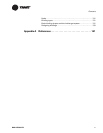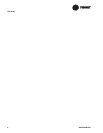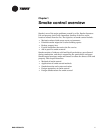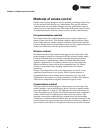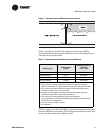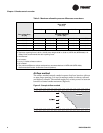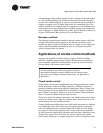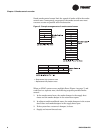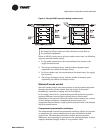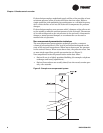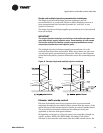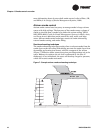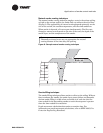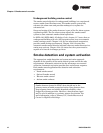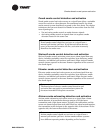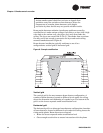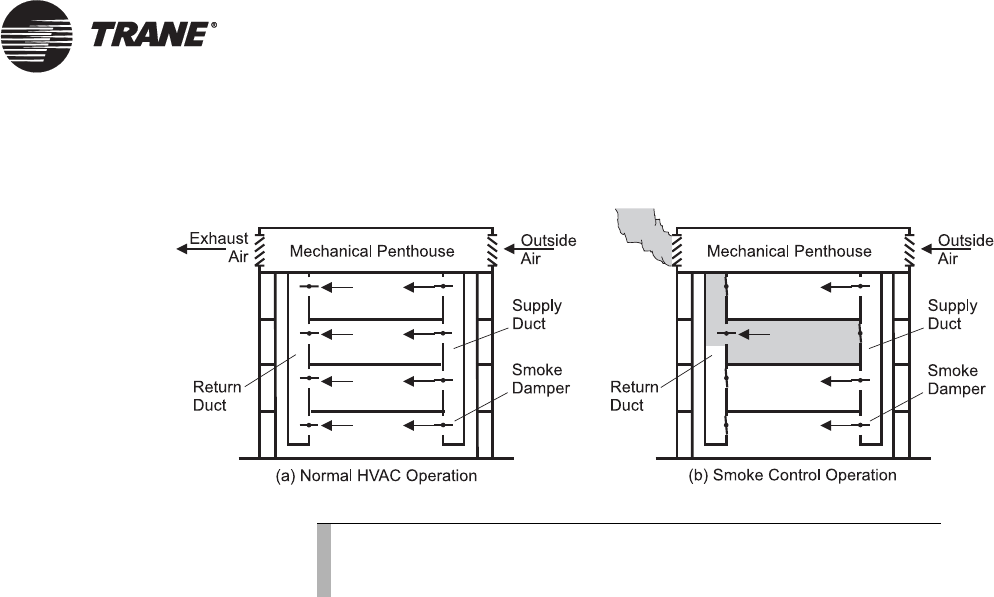
Applications of smoke control methods
BAS-APG001-EN 7
Figure 4: Sample HVAC operation during smoke control
When an HVAC system serves only one smoke control zone, the following
sequence provides smoke control:
1. In the smoke control zone, the return/exhaust fan activates, the
supply fan deactivates.
2. The return air damper closes, and the exhaust damper opens
(optionally, the outside air damper closes).
3. In the no-smoke zone, the return/exhaust fan deactivates, the supply
fan activates.
4. The return air damper closes, and the outside air damper opens
(optionally, the exhaust air damper closes).
Stairwell smoke control
Stairwell smoke control uses pressurization to prevent smoke migration
through stairwells to floors remote from the source of the smoke.
Secondarily, it provides a staging area for fire fighters.
In the smoke control zone, a pressurized stairwell maintains a positive
pressure difference across closed stairwell doors to limit smoke
infiltration to the stairwell. Stairwell smoke control employs one or more
of these design techniques: compensated pressurization, non-
compensated pressurization, single injection pressurization, and multiple
injection pressurization.
Compensated pressurization technique
The compensated stairwell pressurization technique adjusts air pressure
to compensate for various combinations of open and closed stairwell
access doors. The technique maintains constant positive pressure
differences across openings. To compensate for pressure changes, it either
employs modulated supply airflow or over-pressure relief.
Note:
For simplicity, Figure 4 does not show the ducts on each floor or
the penthouse equipment.



